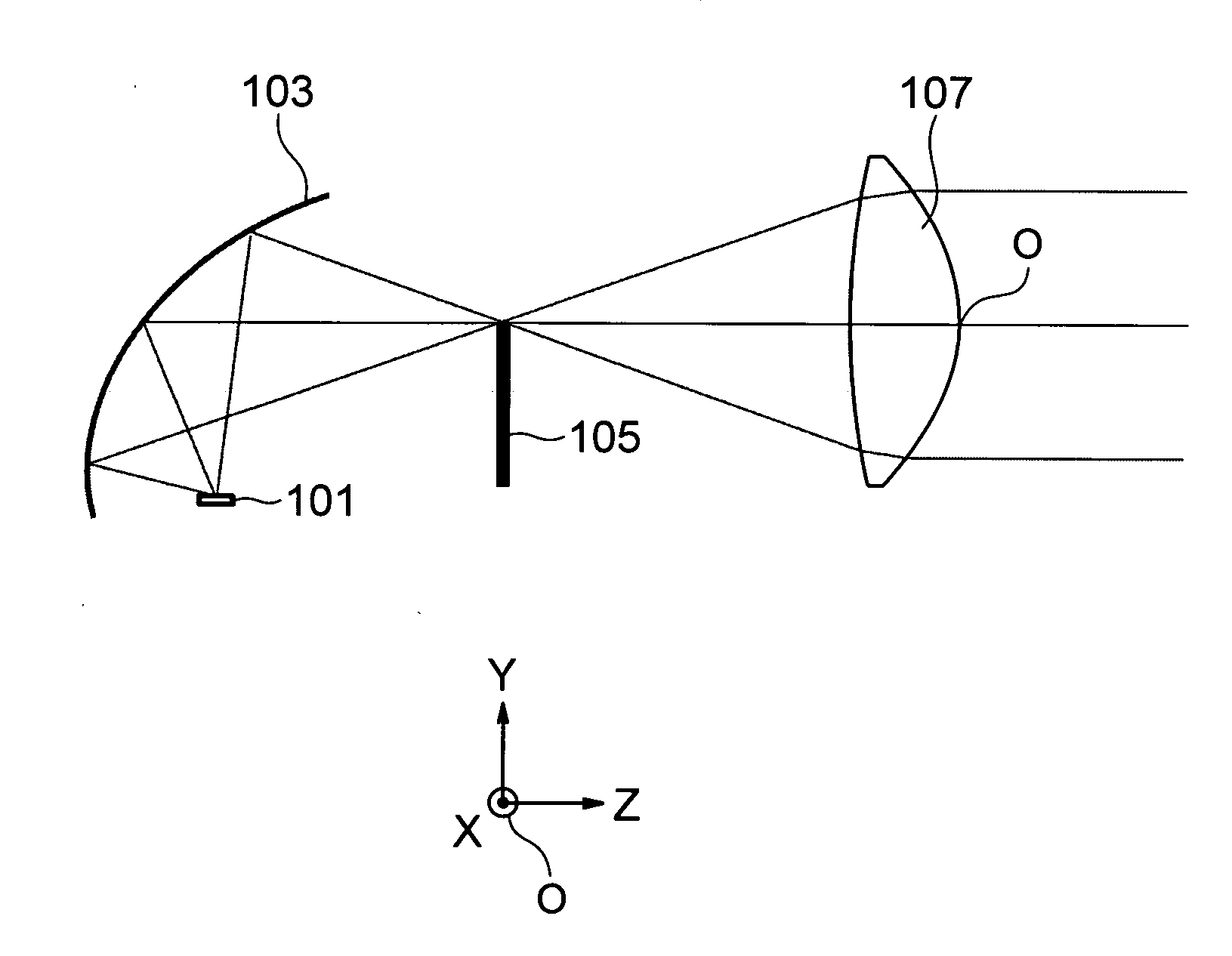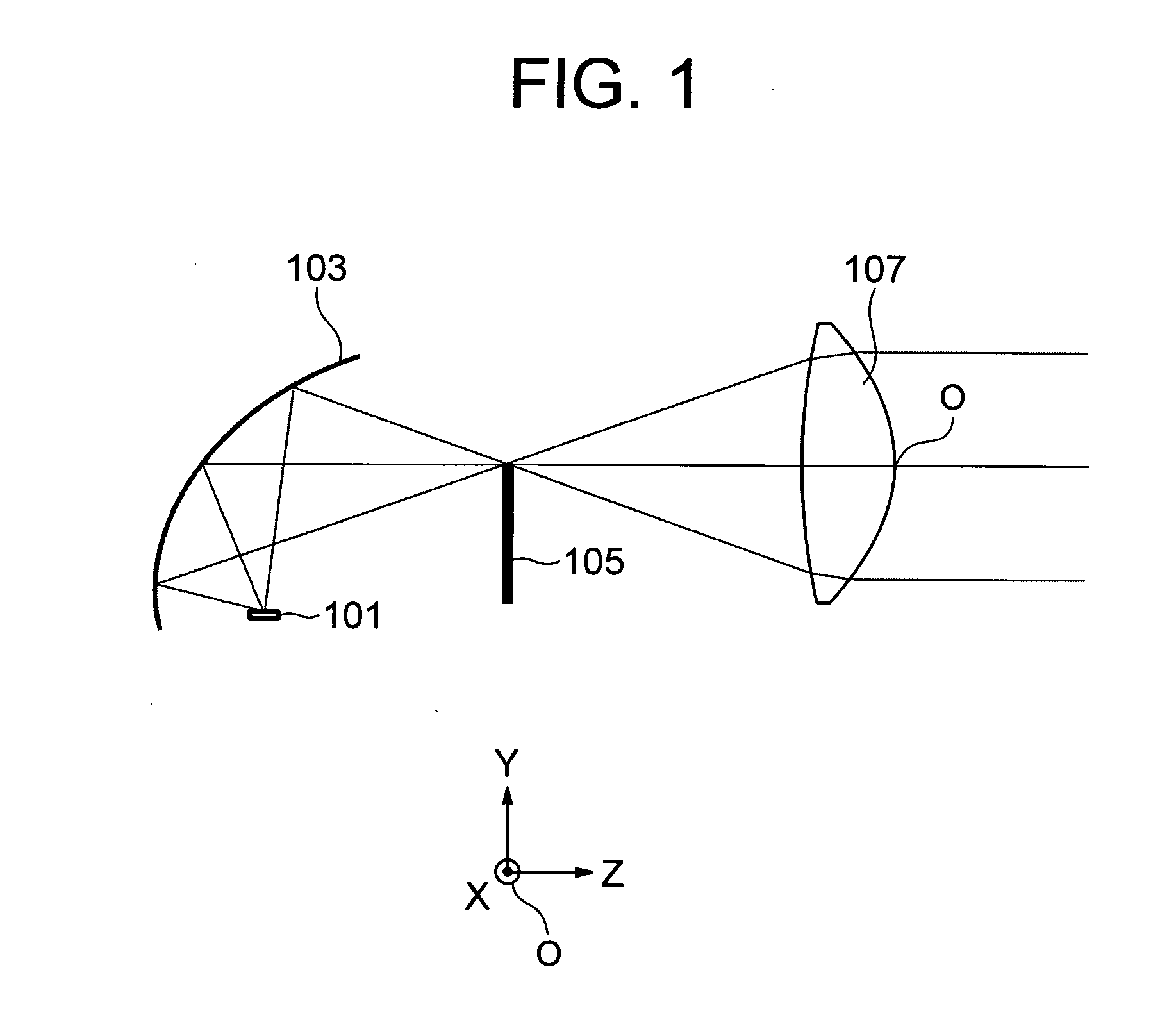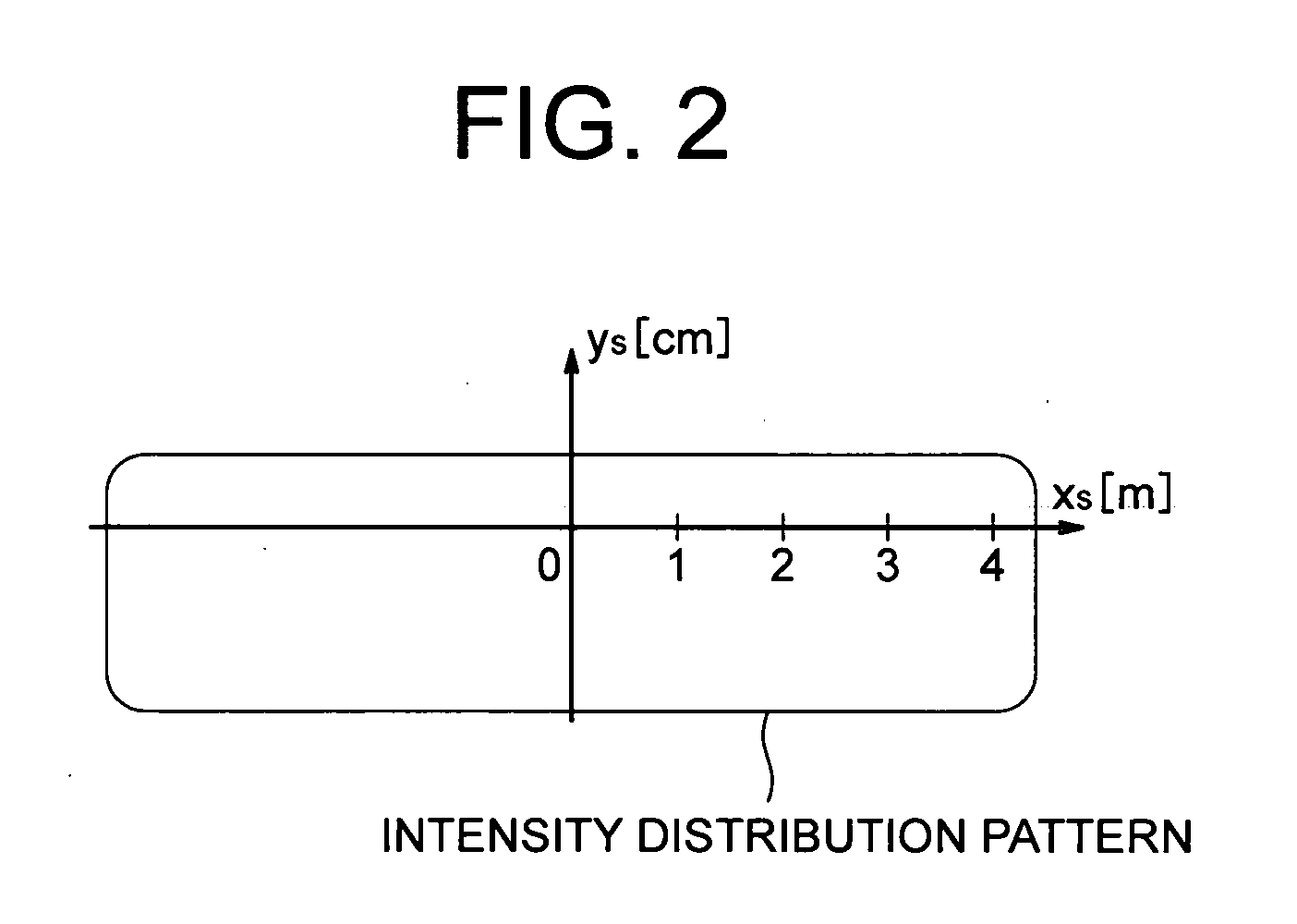Vehicular lamp
a technology of vehicle lamps and lampshades, which is applied in the field of vehicle lamps, can solve the problems of easy fluctuation of lens characteristics and inability to avoid deterioration of transmittance, and achieve the effect of reducing color separation and reducing the degree of color separation
- Summary
- Abstract
- Description
- Claims
- Application Information
AI Technical Summary
Benefits of technology
Problems solved by technology
Method used
Image
Examples
embodiment b
[0137]FIG. 17 illustrates a configuration of a vehicular lamp according to Embodiment B. In Embodiment B, the light passing through a projector lens 107B is not collected.
[0138]In Embodiment B, the correlated color temperature of the light source ranges from 3200 K to 6500 K. Hereinafter the light source whose correlated color temperature ranges from 3200 K to 6500 K is referred to as intermediate-temperature light source. In Embodiment B, the following expression holds:
0.28fD / f / Abbe<0.36
That is, the focal position B to the blue light of the portion in which the diffraction surface of the projector lens 107B is provided is substantially matched with the focal position R to the red light of the portion by adjusting the power of the diffraction surface. A position of a shade 105B on the optical axis is located closer to the projector lens 107B than the focal position closest to the projector lens 107B in the focal positions to the light having the wavelength of 450 nm to 700 nm. In Em...
embodiment c
[0139]FIG. 18 illustrates a configuration of a vehicular lamp according to Embodiment C. In Embodiment C, the light passing through a projector lens 107C is not collected.
[0140]In Embodiment C, the correlated color temperature of the light source is higher than 6500 K. Hereinafter the light source whose correlated color temperature is higher than 6500 K is referred to as high-temperature light source. In Embodiment C, the following expression holds:
0.33fD / f / Abbe
That is, the focal position R to the red light of the portion in which the diffraction surface of the projector lens 107C is provided is located on the light source side of the focal position B to the blue light of the portion by relatively weakening the power of the diffraction surface. A position of a shade 105C on the optical axis is located closer to the projector lens 107C than the focal position closest to the projector lens 107C in the focal positions to the lights having the wavelength of 450 nm to 700 nm. In Embodime...
embodiment d
[0141]FIG. 19 illustrates a configuration of a vehicular lamp according to Embodiment A. In Embodiment D, the light passing through a projector lens 107D is collected.
[0142]In Embodiment D, the light source is the low-temperature light source. In Embodiment D, the following expression holds:
0.34fD / f / Abbe
[0143]That is, the focal position R to the red light of the portion in which the diffraction surface of the projector lens 107D is provided is located on the light source side of the focal position B to the blue light of the portion by relatively weakening the power of the diffraction surface. A position of a shade 105D on the optical axis is kept farther away from the projector lens 107D than the focal position farthest away from the projector lens 107D in the focal positions to the lights having the wavelength of 450 nm to 700 nm. In Embodiment D, the blue ray is generated in the circumferential portion of the light flux with which the object ahead is irradiated through the project...
PUM
 Login to View More
Login to View More Abstract
Description
Claims
Application Information
 Login to View More
Login to View More - R&D
- Intellectual Property
- Life Sciences
- Materials
- Tech Scout
- Unparalleled Data Quality
- Higher Quality Content
- 60% Fewer Hallucinations
Browse by: Latest US Patents, China's latest patents, Technical Efficacy Thesaurus, Application Domain, Technology Topic, Popular Technical Reports.
© 2025 PatSnap. All rights reserved.Legal|Privacy policy|Modern Slavery Act Transparency Statement|Sitemap|About US| Contact US: help@patsnap.com



